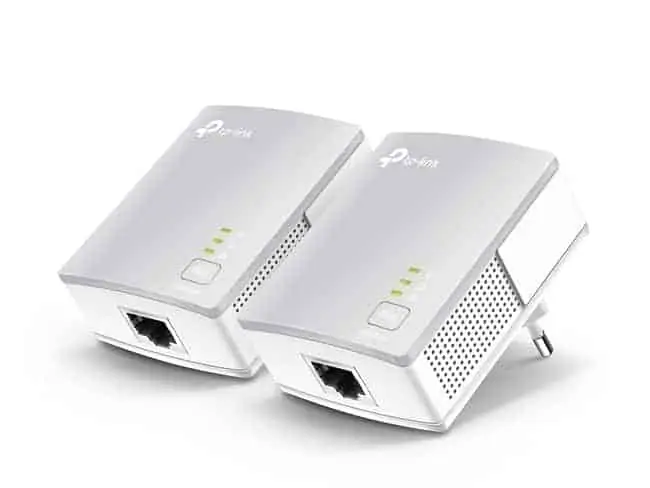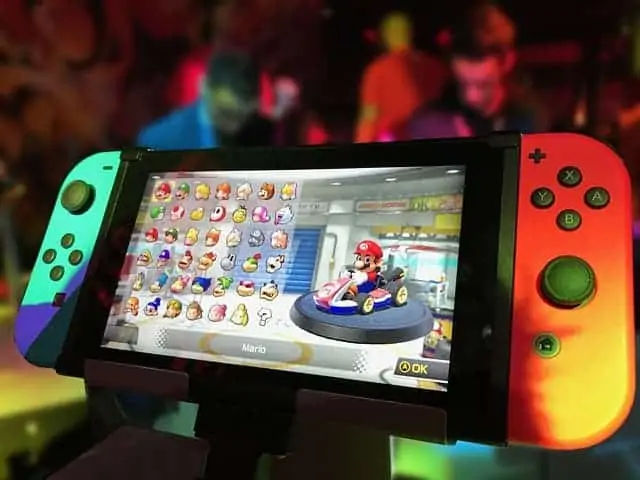Some links on this page are affiliate links and I may receive a small commission from purchases made off them at no extra cost to the reader.
What about solving weak Wi-Fi for those gamers on the Nintendo Switch? It is one of the more portable consoles available but on the downside this means that connectivity options are a little more limited than on other consoles like the PlayStation 4 and Xbox One.
The Nintendo Switch defaults to Wi-Fi connectivity only and as such can run into the same problems any other Wi-Fi dependent devices can regarding signal loss and “dead-zones” round the home.
Thankfully there are actually options to switch to a wired connection and we can use a variety of Powerline Adapter models as a home connectivity solution to deliver a more reliable signal to the Switch even when some distance away from the router.
Here are the main options to get a better wireless signal on the Nintendo Switch:
- Quick reset your router and Switch to refresh the signal.
- Move your Switch closer to your router if possible.
- Switch to a wired connection using a USB to ethernet adapter.
- A Wi-Fi range extender may work as a last resort.
The Switch does have a reputation for being more of a “fun” console in that it has a lot of games aimed at younger players and there is less focus on deadly serious multiplayer gaming. However there are local and online multiplayer options available and sometimes suspect wireless connections can make the experience “laggy” and difficult.
The first two solutions above are fairly obvious and are just quick things you can try which may on occasion work in giving a better Wi-Fi signal.
However, a more permanent solution is to get off Wi-Fi altogether and onto a wired connection, and this is still possible for the Switch, though not as easy as for other games consoles, and does require some extra accessories.
Let’s look at these more advanced options available to solve weak Wi-Fi and latency problems on the Switch. We will list them in order of preference here since there are a number of ways of doing this.
It Is Possible to Switch to a Wired Connection on the Switch
Whilst the Switch does not ship with an ethernet port as standard, it is still possible to create a wired connection by purchasing a USB to Ethernet Adapter from Amazon (paid link), which essentially allows an ethernet connection indirectly. You plug the USB end into your Switch, and then an Ethernet Cable into the adapter port, and from there you have a wired connection.
Ethernet Connections & Better Speeds on The Nintendo Switch
This is ideal if you are using your Switch close enough to your router to be able to run an ethernet cable directly. It will deliver the best possible signal, as ethernet always does compared to Wi-Fi, and should get rid of any lag issues resulting from a poor Wi-Fi connection.
If you intend to play multiplayer with a lot of people this way – the Switch can support up to 8 players on local multiplayer – then there will likely not be enough ethernet ports on your main router. To get around this you can buy a multi-port ethernet switch which will allow multiple gamers to connect to your main router – see for example this Netgear 8 port switch on Amazon (paid link).
Realistically this is could be a mess with up to eight people connecting and therefore eight ethernet cables trailing along the floor. It can be done though and is an option. Wired ethernet also delivers by far the best connection, especially with more people playing. For those who prefer to stay on Wi-Fi we will cover wireless connectivity options further below.
Use a Wired Powerline Adapter if You Are Further Away From the Router
If you don’t intend to use the Switch in the same room as the router but still want a wired connection, then another option to solve weak Wi-Fi is to use a Powerline Adapter, which can extend a wired home network to any room in the house using the house’s existing electrical circuitry.
Powerline Adapters come as a pair of plugs, one of which you connect to your router and the other you connect to your device. The two plugs then communicate through the copper electrical wiring to deliver a wired internet connection to wherever the receiving end adapter is plugged in.
Powerline Adapters 2 Minute Demo Clip
 The TP Link Nano TL-PA4010 Kit model is an entry level, best selling no nonsense powerline adapter model with just one ethernet port and no passthrough. It will provide a solid, wired ethernet connection to your router using the existing electrical wiring of your house. Click here to view on our product page, plus more advanced models that also have wireless function.
The TP Link Nano TL-PA4010 Kit model is an entry level, best selling no nonsense powerline adapter model with just one ethernet port and no passthrough. It will provide a solid, wired ethernet connection to your router using the existing electrical wiring of your house. Click here to view on our product page, plus more advanced models that also have wireless function.
They are an excellent home networking solution and often give a connection almost as good as if you were plugged directly into the router itself, which is exactly what is needed for a strong reliable connection for multiplayer gaming.
So if you purchase the USB to Ethernet Adapter we already mentioned above, plus a powerline adapter kit such as the one linked above, then you have another option to create a wired connection on your Switch console to solve weak Wi-Fi, though admittedly the costs are creeping up here as you are now having to buy two extra accessories.
Powerline adapters with up to three ports on the receiving end are available to provide wired connections for up to three Switch gamers in the same room. To accommodate more people, then again it will require you get an 8 port switch like the Netgear model we already mentioned and connecting that to your powerline adapter port to allow for more connections.
This is a costly but perfectly possible solution for those wanting a wired connection for the absolute best chance of avoiding the problems of weak Wi-Fi and lag. You need a powerline adapter and enough USB to Ethernet adapters and ethernet cables for every gamer, and possibly a multi-port switch as well. For people who would rather stay on Wi-Fi we turn to our third option below.
Wi-Fi Range Extenders as a Last Resort Option
It is true however that some people will not be able to use powerline adapters at all, because the wiring in the home is not in good enough condition to allow the adapters to communicate.
In these cases, you can use a Wi-Fi Range Extender to get a better signal for gaming on the Switch. These are just simple single plug models that you insert in a wall socket, and they capture and boost the existing Wi-Fi signal from your router.
These extender models are available cheaply and can be ideal for casual switch gaming where you don’t necessarily need ultra low ping in the way that hardcore gamers do, but you do want a bit of a better connection.
You just install and configure the extender somewhere halfway between you’re router and the Switch, and do some simple setup. You can then connect the Switch to the closer and stronger extender network for a better signal.
However, be aware that range extenders can be hit and miss in terms of performance and reliability. They will tend to work better over short to medium distances, where you need a little bit better Wi-Fi signal. Anything more than that and performance is not guaranteed, and you are better getting onto a wired connection instead, either though powerline or direct ethernet.
See our page on range extenders for models in different price ranges.
